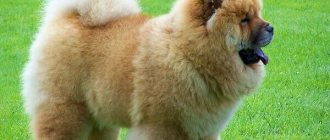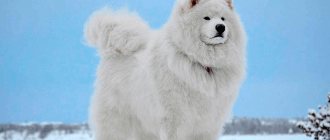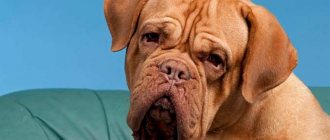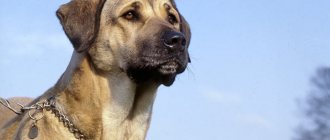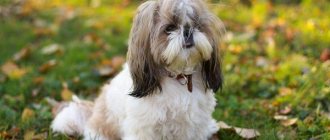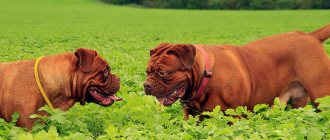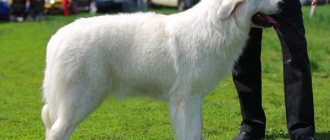Pomsky - the loyalty of a husky and the playfulness of a spitz
Pomsky is the name of a crossbreed descended from two completely different breeds - the Pomeranian and the Siberian Husky. They first started talking about him at a veterinary forum, where they were interested in genetic diseases and the dog’s temperament. The online community user who opened the topic dreamed of having a four-legged friend from a dog shelter. Heated discussions and disputes began on social networks around the Pomsky, because the parent couple had significant differences in size.
Let's try to figure out how the breeders were able to develop such a variety?
Nurseries
There are not many organizations in Russia that distribute this type of dog. One nursery is located in Moscow. The breed itself is popularized and bred there. That is, they are trying to breed dogs with special character traits that are resistant to various types of disease.
Kennels pay special attention to the vaccination of dogs. Typically, the vaccine is supplied by the best pharmaceutical companies.
The breed is registered in specialized clubs in America, as well as in the association. If the buyer doubts the origin of the dog, DNA tests are carried out.
Official websites of nurseries can be found on the Internet, where you can also find detailed information and offers from companies. When purchasing a pet, a sales contract is issued. The buyer also has the right to receive an information document about vaccinations (how many and when they were done) and the exact age of the animal.
If necessary, it is possible to obtain advice on the rules of care or treatment throughout the pet’s life.
History of the origin of the crossbreed
The famous professional breeder, owner of a Siberian Husky nursery, Teresa Peterson, who lives in the American city of Burnsville, became seriously interested in the Pomsky. In 2013, puppies were born and officially registered. It is T. Peterson who is considered the ancestor.
Due to the different sizes, natural mating is almost impossible, so we had to resort to artificial insemination. A Siberian Husky dog acted as the mother to avoid pathological births.
Other breeders followed her example, thanks to whom, after a few years, there were already significantly more Pomskies.
Two clubs strictly control Pomsky breeding: RCA and ACHC (American Hybrid Dog Club). A list of breeders and their nurseries is published on their official websites. Other cynological organizations still do not recognize mestizos.
When purchasing a puppy, the new owner signs an agreement stating that upon reaching six months of age, the dog must be spayed or neutered. Veterinary confirmation of the operation will need to be sent to the club. Otherwise, you will have to answer to the law.
Without permitting documentation, it is prohibited to use Siberian Huskies and Pomeranians for crossing.
Breeding
The main question that interests breeders is how to cross two dogs of different sizes. Internet users have many opinions on this matter. Of course, owners do not participate in the mating of dogs; everything is much simpler. Hybrids are created by artificial insemination of a female husky. But not the other way around. If you do it differently, the Spitz girl simply cannot stand large puppies. In 70% of cases, they undergo a caesarean section after carrying cubs of their breed.
First litter puppies are in great demand. Mating a Husky with a Spitz artificially is carried out once, after which everything happens naturally.
The first generation has a more or less predictable character, but from the second the puppies acquire distinctive features, and the options will be very diverse.
Description and features
Crossing dogs has been resorted to more than once. Some use hybridization to obtain new workers, others try to improve the existing stock.
For what purpose were Pomskies bred? Probably just to get a positive companion. Dogs have a unique, inimitable character and attractive appearance. The pet will delight household members with its playful temperament, goodwill, and open communication.
From the Pomeranian he got a rich fur coat, a cheerful disposition, and a tireless desire to have fun, and from the Husky he got attractive eyes and incredible endurance. Both Pomsky breeds inherited only the best qualities. Some breeders generally claim that the hybrid is devoid of any disadvantages.
Pomsky is a dog with sociable character traits. She is loyal to her owners and tries to keep up with them. A hybrid of a Spitz and a Husky will be a faithful, affectionate, devoted pet.
A huge advantage of a crossbreed is its incredibly stable psyche. The dogs are well controlled, amenable to training, and quickly make contact with humans.
Due to the fact that Pomeranians and Siberian Huskies have many different colors, Pomskies can also be black and white, chocolate, copper, sable, fawn or white.
Application
Like many other “designer” breeds, the Pomsky was bred solely for decorative purposes, as a companion dog. You will never be bored with such a dog; the Pomsky is a “perpetual motion machine” that does not want to stop. In a playful way, he likes to take part in sporting events, for example, canicross, agility. It quickly learns tricks (jumping, dancing), so the Pomsky can be considered a circus dog, especially since Spitz dogs have been taking part in circus programs for a long time.
Advantages and disadvantages
The main advantage, in addition to attractiveness, should be considered good health, as well as the absence of genetically determined diseases to which ancestors are susceptible. Proper care, maintenance, and feeding make it possible to encounter problems only in older individuals, and even then they are purely age-related.
Other advantages:
- Easily trainable;
- Devotees;
- Good-natured;
- They live a long time, about 14-15 years.
Minuses:
- Predisposition to the formation of tartar;
- Active physical activity is required;
- Tendency to howl;
- Lack of security qualities.
Despite the fact that crossbreeds were bred relatively recently, they have already managed to win thousands of human hearts.
Selection rules
Before buying puppies, you need to make an appointment with the breeder and get acquainted with the care of the pets - whether they receive enough attention, what are the living conditions in which they live and their state of health. You also need to talk to the seller and find out from him when the mating took place, look at the pedigree and medical record, and find out what the animal was fed. In case of evasive answers, it is worth considering whether to take a puppy from such a person.
Expert opinion
Anna Abramenko
An avid dog lover. Experience in veterinary medicine since 2009.
Ask a Question
The first thing you should pay attention to is the activity of a small dog, and not the beautiful coloring, although the color and well-groomed appearance of the hair coat is also an important factor.
The puppy must have:
- soft, clean wool;
- clean eyes, ears, nose without discharge or stains;
- not bloated belly;
- activity, but not aggressiveness in movements;
- no redness of the skin.
There is no need to buy a dog without a pedigree. Otherwise, there will be a risk of acquiring a sick and aggressive pet.
Breed standard and varieties
There is no need to talk about a constant standard or description of a crossbreed. The appearance of each individual still depends on the play of genes. Remembering Mendel's genetic laws, we can confidently say that the first generation of hybrids (F1) receives an equal number of traits from their mother and father. Half of the litter turns out to be husky-like puppies, and the other half are spitz-like. Usually, a Spitz male and a Husky female are taken for crossing, because it will be more difficult for the Pomeranian to bear large fruits.
F1 dogs can mate with each other, but the results will not be as impressive. Each crossing of subsequent generations is reflected in the appearance not in the best way. Mestizos will be very different from their older brothers in appearance, and in the end these matings will lead to degeneration. This is probably why it is so rare to see advertisements for the sale of third generation puppies.
The average F1 hybrid is a dog weighing approximately 6-7 kg and 30-40 cm tall. The sexual dimorphism of the Pomsky is pronounced, manifested in the fact that females are smaller and lighter than males.
In order to at least somehow divide the crossbreeds according to external characteristics, breeders tried to describe the five main exterior types, which we will now talk about. Different lines indicate the interaction of genes and the predominance of one over the other.
Fox type Pomsky
The main characteristic of this type is its sharp muzzle, which looks like a fox. The color also fully embodies the name - red. The Pomsky inherited a long body from the Siberian Husky, and a light frame from the Spitz. There are protruding ears on the head.
Plush
The plush appearance is created by the short, padded coat. The dog's body is small in size, approximately like that of a Spitz, but the color comes from a husky. The muzzle is shortened. The thick tail is rounded into a tight ring.
Pomsky white
This type of hybrid is very rare. The dog's coat is short but thick, the undercoat is well developed. The color of the mestizo is like snow-white snow. The short muzzle has a medium-sized nose. The dog itself is quite large.
Brown Pomsky with blue eyes
Even for Siberian Huskies, the combination of brown color and blue eyes is considered rare, let alone hybrids. The pigmentation of the lips, nose, and eyes is brown. The undercoat is well developed.
Shorthaired Pomsky
Not the most popular variety of Pomsky. For some reason it is in the least demand among people. The weight of adult individuals varies from 5 to 13 kg, and height - 25-40 cm.
conclusions
A Pomsky can be a fantastic pet; you just need to make sure you're qualified for it. This breed is best suited for those who do not have small children or who do not have close neighbors who would be annoyed by a vocal puppy.
Also, keep in mind that you will need to dedicate a lot of time and attention to this as they love to play and want to be close to their people. If you think a Pomsky would be a great addition to your home, it may take a little time to find one since they are a rarer breed.
You also need to be prepared to possibly pay a hefty price. But if you take the plunge, you can be sure that you will get an adorable new companion who is loyal and affectionate.
Character and behavioral characteristics
Despite the popularity and prevalence of Pomskies, as far as character is concerned, they can be considered “dark horses”. They inherit behavior and temperament from the parent couple, but this does not prevent dogs from adding individual character traits to the “inheritance” of their ancestors, which makes them somewhat unpredictable.
In general, these are dogs with a playful, mischievous disposition, sociable temperament, and a penchant for adventure. Therefore, there are frequent cases of escapes while walking with the owner. Pomskies are happy to stumble upon an adventure or the next round of trouble.
In a family, dogs behave friendly, openly, they quickly become attached and make contact. But you shouldn’t expect equal love for all household members. A Pomsky will always have one favorite owner, whose opinion he will listen to a little more than the others. But again, universal worship, boundless devotion to man - this is not about them.
Family life
The Pomsky gets along well with families - he has a very kind character, is affectionate with children and an incredibly loyal dog. He is happy to see new faces, does not bark for no reason and does not bite anyone. This is the ideal family dog. Sometimes he will bark or yap because he needs attention.
These are very sociable dogs and get along well with families.
If you decide to get this mestizo, then rest assured that he will soon become a new full-fledged member of the family.
Education and training
Socialization and education are important for any breed, and doubly so for a mixed breed, from whom you don’t know what to expect. By neglecting training, you risk getting a disobedient, wayward pet.
Like huskies, Pomskies are quite intelligent, but their sense of adventure outweighs them. Therefore, the owner will have to not only teach the animal commands and behavior patterns, but also learn to predict unwanted actions himself.
The Pomsky will test the owner's authority by occasionally trying to break the rules. Only a person with a strong character can gain leadership.
Any professional dog trainer will tell you that it is better to start obedience training at three months, i.e. from the moment the puppy appears in the house. Kids willingly explore the world around them at this age, are open to new knowledge and have not yet acquired bad habits.
A small puppy is not able to concentrate on a lesson for a long time, so the first training should be no more than 15 minutes.
From the first days of life in a new home, establish rules of behavior for your pet. All household members should adhere to the same training method, without succumbing to the puppy’s tricks. The dog should have separate places to rest and feed.
Unobtrusive training should begin with joint games. An overly strict and rude attitude during classes will lead to the opposite result: the animal will stop obeying at all, and possibly get out of control. Excessive affection is also not the most suitable option, so the owner will have to find that golden mean. A balance of negative and positive reinforcement will quickly lead to the desired results.
Temperament
Both Pomsky relatives have bright temperaments. Spitz are active, playful, social dogs. Huskies are energetic and independent. In a hybrid breed, these qualities coexist perfectly, softening each other. For example, if a Spitz hates loneliness and does not tolerate separation from its owner, and a Husky prefers freedom and independence, then in a Pomsky this will develop into a reasonable attachment. He is capable of being alone for some time without damage to his psyche and emotional state, so the dog is suitable for both a large noisy family and a lonely person.
At the same time, excessive independence can complicate the learning and training process. Sometimes a pet thinks that he knows better what he needs at the moment. And if he decides that a game is preferable to a lesson, it will be difficult to convince him. Under no circumstances should you convince a child with force, aggression, rudeness, or raised voices. Patience, kindness, goodies - this is the best way to find a common language. Pomsky has a sharp mind, excellent memory, and quick wit. With the right approach, he learns well.
Another feature inherited from the husky is the absence of causeless barking. Pomskys rarely express their emotions by barking loudly. He can be taught to voice on command, sometimes he can “sing” or howl. But you definitely won’t bother your neighbors with loud barking in a closed apartment.
Health
Pomskies, despite their artificial breeding, have a good immune system, thanks to which they practically do not suffer from viral diseases. It would seem that they should inherit the diseases that affect the Siberian Husky and Pomeranian Spitz. But this is far from true.
The flaws still exist. For example, a Pomsky's weak point is its teeth. Very often, tartar forms, the appearance of which can be prevented by timely laser cleaning. These procedures are carried out in veterinary clinics. It is not difficult to detect the symptoms of tartar: the color of the tooth near the gum becomes yellowish. At this stage, you can easily remove it yourself with a brush. Then a process of mineralization will follow, the consequences of which the owner will no longer be able to cope with on his own. If left untreated, the stone will change color to dark brown and become much larger.
And most importantly, we must not forget about preventive dewormings and vaccinations on schedule. Vaccinations are required for all dogs. This saves not only the life of the pet, but also the health of other family members. In addition, in the absence of vaccinations and appropriate marks in the veterinary passport, the dog cannot be transported across the border.
Many health problems can be prevented in time by regularly visiting a veterinarian.
